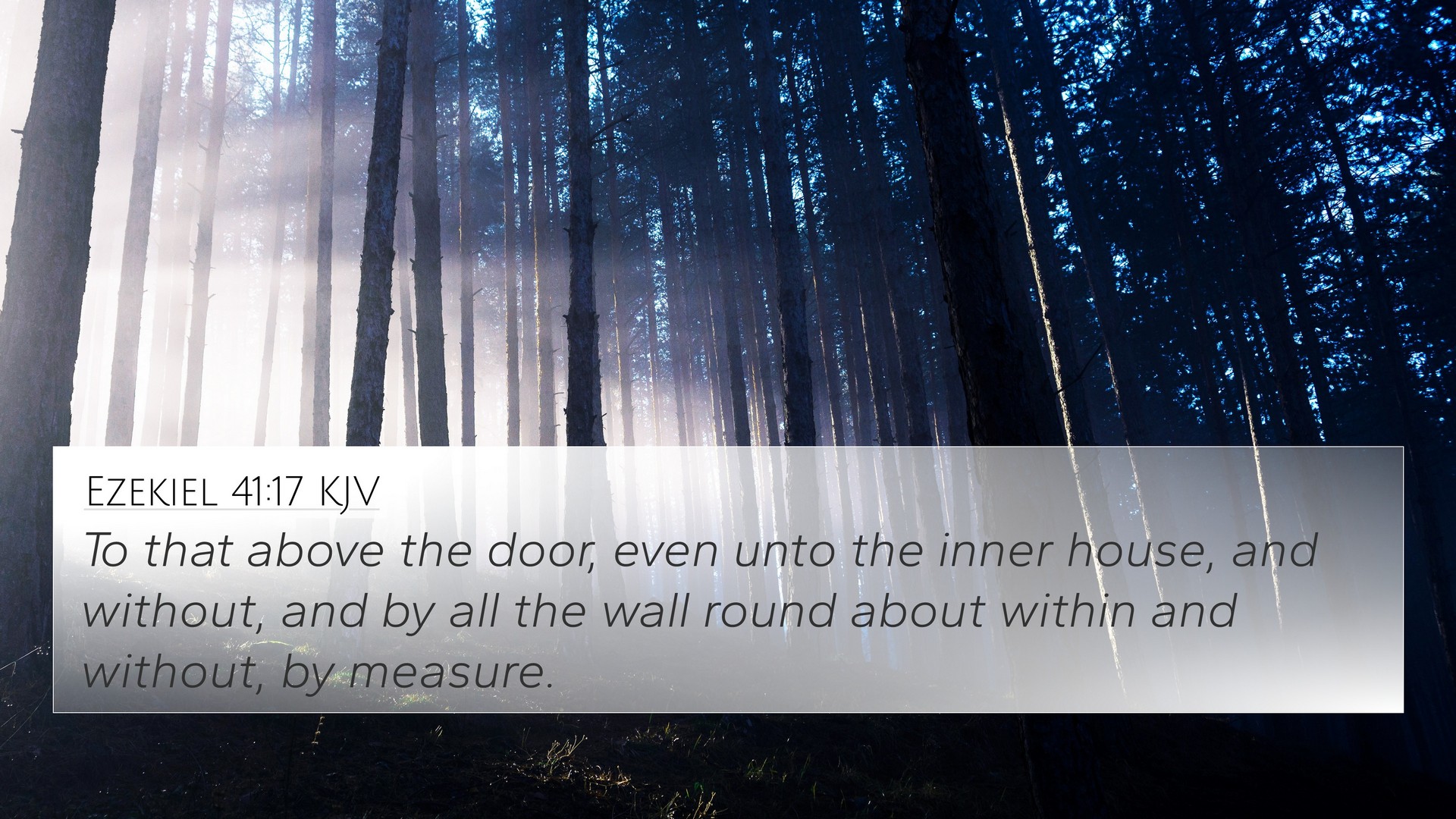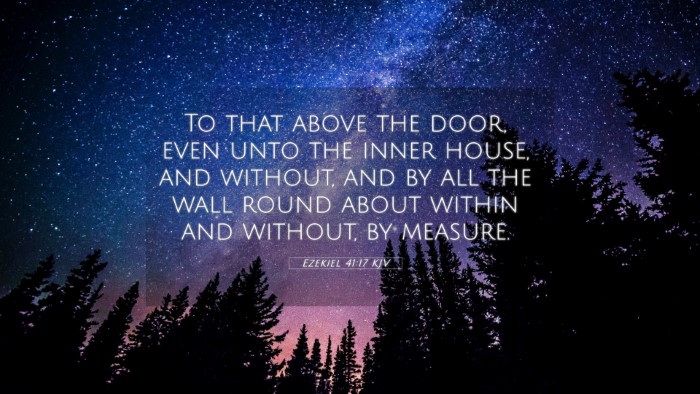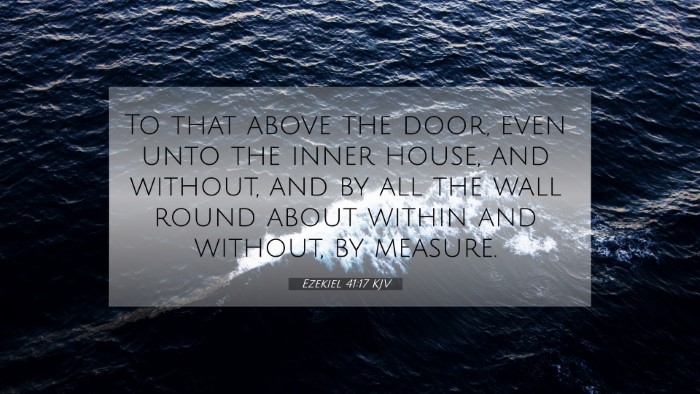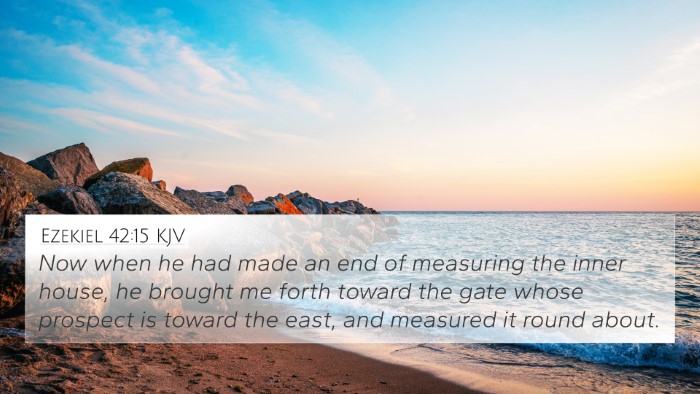Ezekiel 41:17 - Summary and Commentary
The verse Ezekiel 41:17 states:
“And the space before the chambers was twenty cubits inward, and the inner doors were toward the north and south: and the breadth of the temple was seven cubits on this side and seven cubits on that side.”
Overview
This verse is a part of Ezekiel's vision of the temple, describing its layout and dimensions. It serves as a blueprint of the sacred space, emphasizing the divine order and holiness associated with the temple.
Interpretation from Public Domain Commentaries
Matthew Henry's Commentary
Henry notes that Ezekiel's detailed description illustrates the grandeur and perfection of God’s house. The specific measurements symbolize God's meticulous attention to His dwelling place. The inner doors’ orientation towards the north and south suggests accessibility and openness in worship.
Albert Barnes' Commentary
Barnes highlights the symbolic significance of the dimensions. The chambers and the breadth of the temple denote the vastness of God's presence and the spaciousness of grace. The mention of the 20 cubit space emphasizes sufficient room for worship and communion, indicating the importance of approaching God with reverence and dedication.
Adam Clarke's Commentary
Clarke elaborates on the architectural elements as indicative of the spiritual structure of worship. The design signifies order and harmony in the relationships between the sacred and the secular, demonstrating that every aspect of worship is planned and intentional under divine guidance.
Thematic Connections
The thematic analysis of Ezekiel 41:17 reveals important biblical motifs such as:
- Divine Presence: The temple symbolizes where God meets His people, reflecting His desire for fellowship.
- Holiness: The details regarding measurements signify how holiness permeates all aspects of life and worship.
- Access to God: The orientation of doors suggests various avenues for approaching God, a theme recurring in other texts.
- Order and Structure: God's meticulous design shows the importance of structure in worship settings.
Complementary Bible Cross References
To deepen understanding of Ezekiel 41:17, consider the following cross-references:
- 1 Kings 6:2 - Describes the dimensions of Solomon's temple.
- Exodus 25:9 - Notes God’s instructions for the construction of the tabernacle.
- Isaiah 66:1 - Speaks about the nature of God’s dwelling as being beyond human construction.
- Hebrews 9:2 - Refers to the tabernacle and its furnishings, linking Old Testament temple design with New Testament theological insights.
- Ephesians 2:10 - Discusses believers as God's handiwork, emphasizing a spiritual temple concept.
- Revelation 21:22 - Portrays the New Jerusalem, highlighting the ultimate fulfillment of God dwelling with humanity.
- Matthew 21:12 - Jesus cleansing the temple shows the importance of purity in worship spaces.
Conclusion
Ezekiel 41:17 offers profound insights into the nature of God’s dwelling and worship. By understanding its architectural significance and intertextual connections with other Scripture, one can appreciate the intricate relationship between God and His people throughout the biblical narrative. For a fuller study, utilize tools for Bible cross-referencing, such as a Bible concordance or a cross-reference guide to explore the profound thematic links throughout Scripture.
Resources for Further Study
For those seeking to delve deeper into Bible verse relationships, consider the following approaches:
- Use a Bible concordance to find related verses.
- Explore cross-reference Bible study methods to analyze connected texts.
- Identify themes through inter-Biblical dialogue for deeper insights.
Final Thoughts
Understanding verse meanings through comparative analysis can enrich one's faith journey. By examining connections, readers can uncover layers of meaning and see how Scripture interprets Scripture, leading to a more comprehensive understanding of God's message throughout the Bible.



